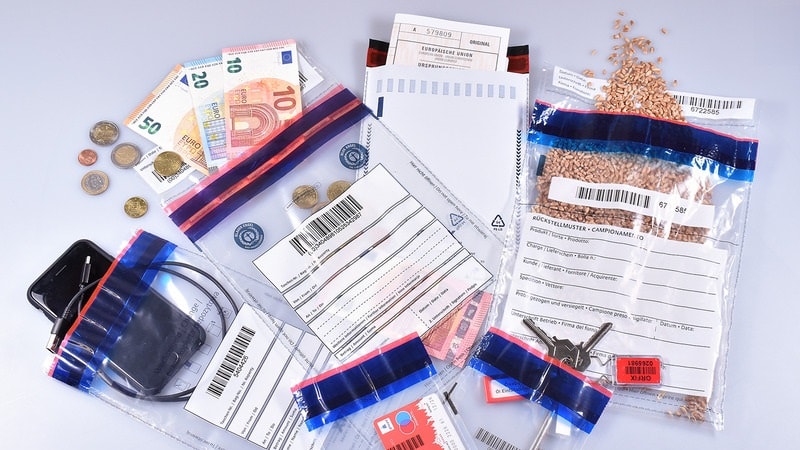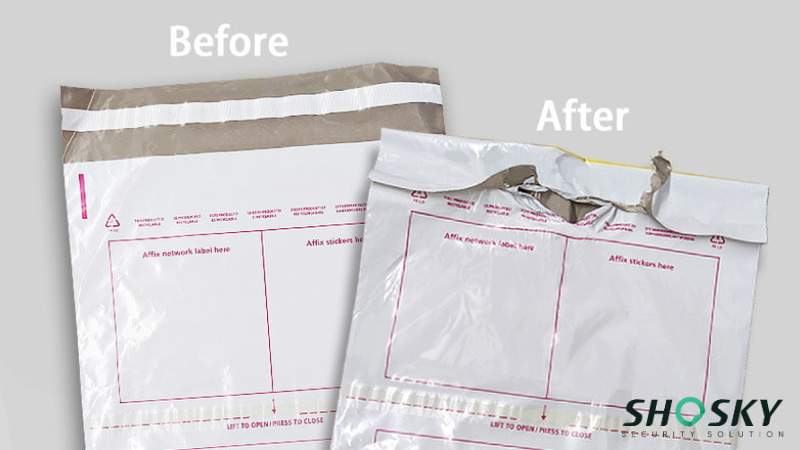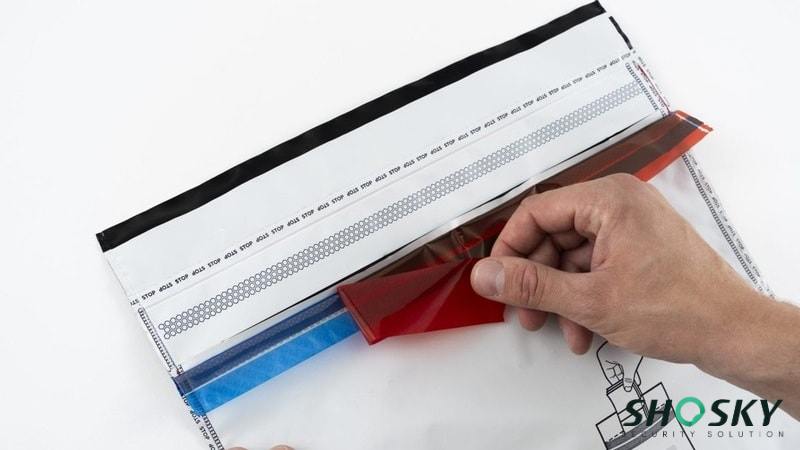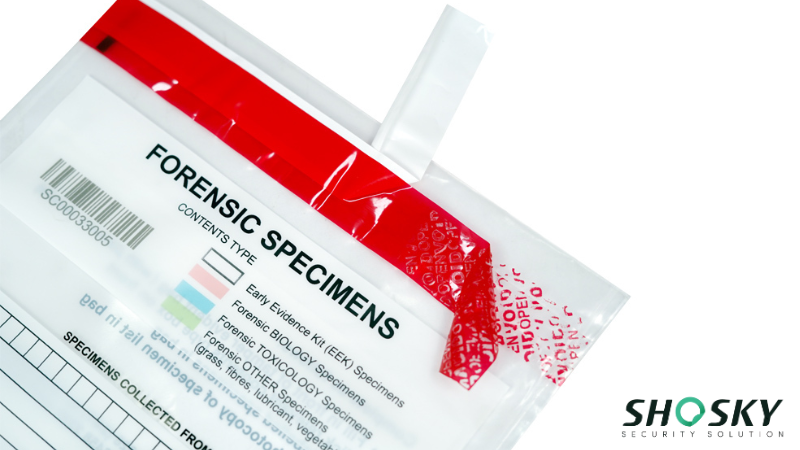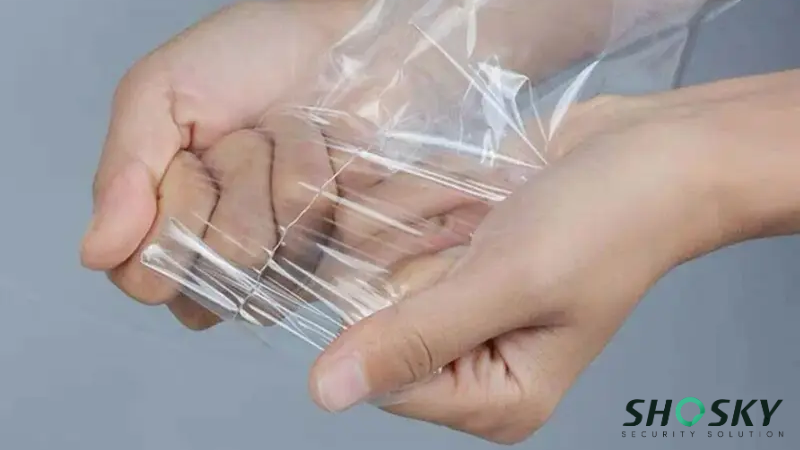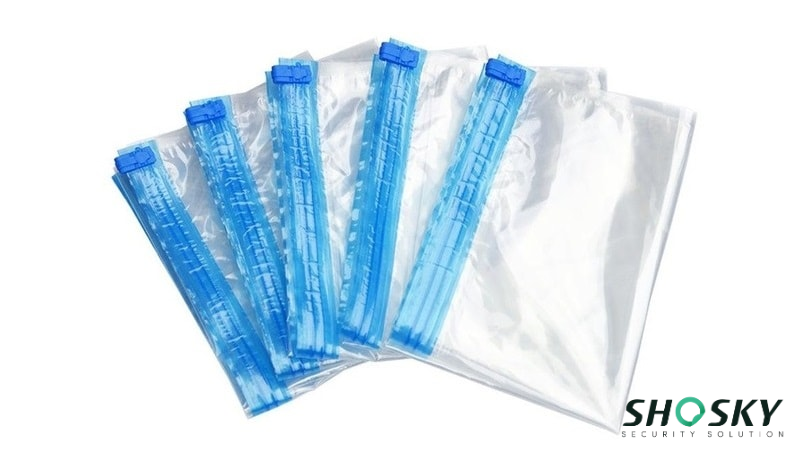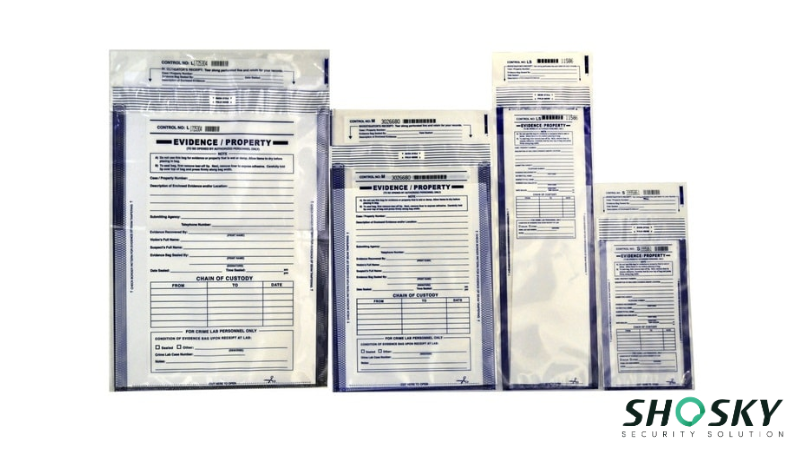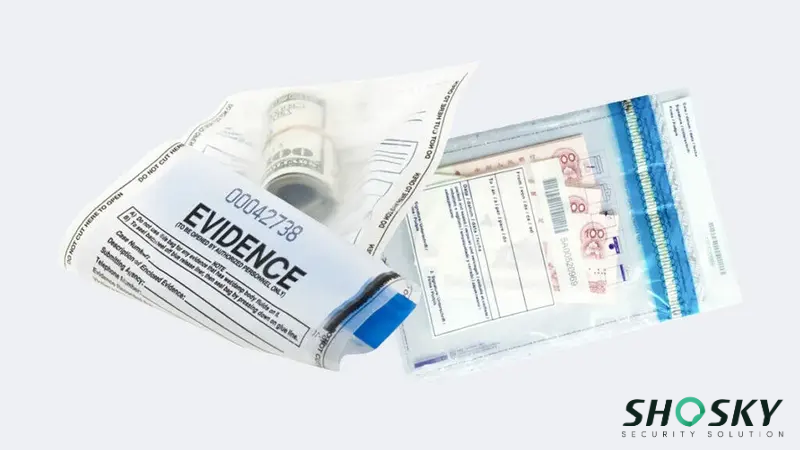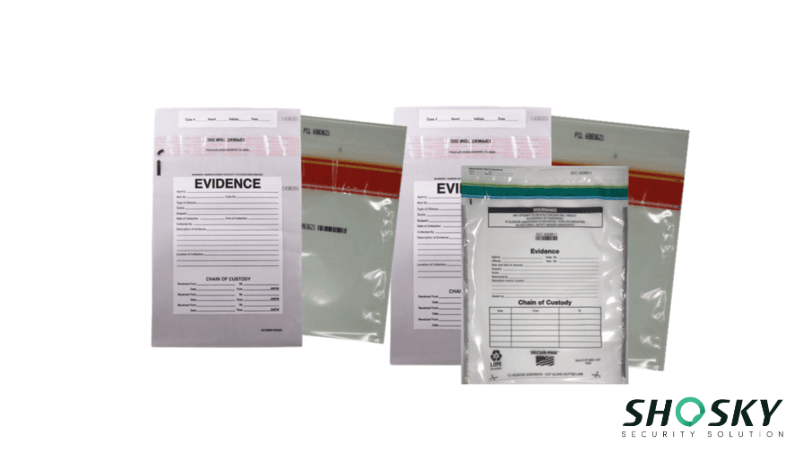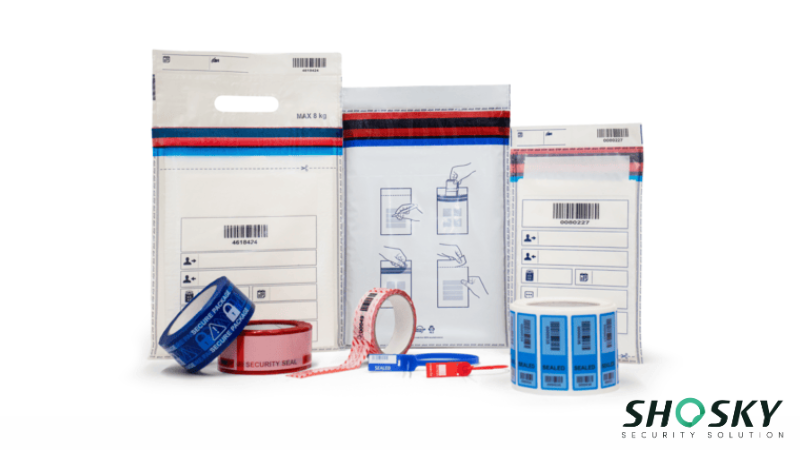Building and maintaining customer trust is essential for any successful business. A tamper-evident bag plays a vital role in this, providing a clear visual indicator that a product has not been compromised. The visible security offered by these bags reassures customers and strengthens brand loyalty.
This article explores the different types of tamper-evident bags available, highlighting how they contribute to building customer confidence. We’ll also examine the various security features and discuss how the right choice of packaging can enhance your brand reputation.
What Are Tamper-Evident Bags?
Tamper-evident bags are specially designed containers that provide visible signs if they have been opened or tampered with. Unlike tamper-proof bags, which are designed to be nearly impossible to open without damaging the packaging, tamper-evident bags only show evidence of tampering, such as a broken seal or a damaged closure.
This distinction makes tamper-evident bags essential for providing a clear indication of compromised security. Here are a few benefits of these bags:
- Clear evidence of tampering: Immediate indication if the bag is breached.
- Easy identification: Visible signs like broken seals or damaged closures.
- Cost-effective security: Offers security without the higher cost of tamper-proof bags.
- Enhanced accountability: Helps maintain the chain of custody for sensitive items.
- Compliance with regulations: Meets legal and security standards for evidence handling.
Tamper-evident bags are widely used in law enforcement, the legal sector, and personal security.
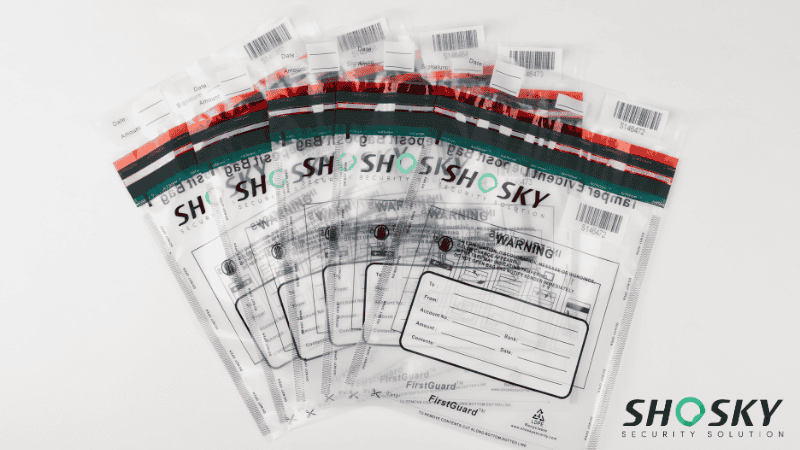
In law enforcement, they are used to store evidence, ensuring that it remains intact until it can be processed.
In the legal sector, they provide protection for sensitive documents.
In personal security, they safeguard valuable items or cash during transit.
These bags are essential for maintaining the security of the contents and ensuring the safety and trust of consumers, clients, and authorities.
6 Types of Tamper-Evident Bags
Tamper-evident bags come in various styles, each designed for specific security needs. The most common types include:
1. Plastic Bags with Tamper-Evident Seals
Plastic bags with tamper-evident bag tape are one of the most common types used for securing items during transportation and storage. These bags feature a specially designed seal that, when broken, provides immediate evidence of tampering. The seal is usually a sticker or adhesive, which leaves a clear void or mark if someone attempts to open the bag without authorization.
Pros:
- Affordable and widely available.
- Easy to use with clear tamper-evident features.
- Suitable for temporary storage or short-distance transportation.
- Ideal for sensitive items like documents or electronics.
Cons:
- Limited security for high-value or long-term storage.
- The seal may be vulnerable to sophisticated tampering methods.
These tamper-evident plastic bags are affordable and easy to use. They offer an efficient solution for protecting documents, electronics, or other sensitive materials from tampering.
Once the seal is compromised, the bag is no longer considered secure, providing immediate proof of interference. This makes them ideal for temporary storage or short-distance transportation where quick identification of tampering is necessary.
2. Breakaway Seal Bags
Breakaway seal bags are designed for maximum security, utilizing a seal that physically breaks when tampered with. This type of bag features a tamper-evident closure that detaches when an attempt to open the bag is made.
Once the seal is broken, the bag cannot be resealed, ensuring that any unauthorized access is easily detectable. These bags are commonly used in high-security applications, such as transporting evidence or valuable items.
Pros:
- Highly secure with seals that cannot be resealed.
- Ideal for high-security applications like evidence handling.
- Provides clear and irrefutable evidence of tampering.
Cons:
- Single-use only; not reusable.
- It can be more expensive than other tamper-evident options.
Breakaway seal bags provide an added layer of protection for sensitive contents. The breakaway seal is often equipped with a unique locking mechanism, which prevents the bag from being opened without leaving clear evidence of tampering. These bags are particularly useful in law enforcement, legal sectors, and industries where securing the integrity of the contents is paramount.
3. Tape-Sealed Bags
Tape-sealed tamper-evident bags use specialized security tape that leaves an imprint or warning message when removed. This type of bag is often used in packaging and logistics, where security and easy identification of tampering are necessary.
The tape typically features a message like “VOID” or “OPENED,” which becomes visible once the tape is peeled away, providing clear evidence of unauthorized access.
Pros:
- Cost-effective and simple to use.
- Security tape acts as a visible deterrent.
- Suitable for low-sensitivity or budget-conscious applications.
Cons:
- Limited durability and resistance to environmental factors.
- Tape can be vulnerable to skilled tampering attempts.
The primary advantage of tape-sealed bags is their simplicity and cost-effectiveness. While not as sophisticated as other types, they are a reliable choice for securing smaller items or less sensitive materials.
Tape-sealed bags are especially useful for short-term storage or situations where budget constraints are a concern. The tamper-evident tape serves as a visual deterrent against tampering and helps ensure the security of the contents.
4. Shrink-Wrap Sealed Bags
Shrink-wrap sealed bags provide an extra layer of security by encasing items in a tight, heat-sealed plastic film. This shrink-wrap conforms to the shape of the contents, making it nearly impossible to tamper with the items without visibly damaging the wrap. If the shrink wrap is disturbed or opened, it will show clear signs of damage, indicating that the contents may have been accessed.
Pros:
- Provides both tamper evidence and environmental protection.
- Effective for fragile items and long-distance shipping.
- Tampering is immediately visible through damage to the wrap.
Cons:
- Requires heat-sealing equipment.
- Not suitable for reusable applications.
Shrink-wrap bags are often used for products that require both tamper evidence and protection from environmental factors like moisture or dust.
These bags are especially effective for shipping and storing fragile items, as they provide a secure and sealed barrier around the product. Additionally, the tamper-evident nature of shrink wrap ensures that any tampering attempts will be immediately visible, offering peace of mind during transit or storage.
5. Vacuum Sealed Bags with Lug Closures
Vacuum-sealed bags with lug closures combine the benefits of vacuum sealing with a tamper-evident mechanism. These bags are sealed tightly using a vacuum, which removes air and preserves the contents, especially perishable goods or items sensitive to moisture.
The lug closure system provides a secure seal that cannot be reopened without leaving evidence of tampering, making it ideal for high-security uses such as medical or law enforcement applications.
Pros:
- Combines tamper-evident features with airtight preservation.
- Excellent for perishable or moisture-sensitive items.
- Ideal for industries requiring both security and preservation.
Cons:
- Higher cost and requires vacuum-sealing equipment.
- Can not be resealed once opened.
The vacuum seal ensures that the contents remain secure and preserved while also offering tamper evidence. Once the vacuum seal is broken, the bag is no longer airtight, and the compromised seal is clearly visible.
This feature is useful for industries that require both freshness preservation and tamper-proof security, ensuring that the contents are safely stored and transported with clear evidence if tampering occurs.
6. Serialized and Barcode Bags
Serialized and barcode tamper-evident bags are equipped with unique numbers or barcodes to allow for easy tracking and inventory management. These bags provide a secure method for logging and monitoring items throughout their journey, ensuring that each bag can be traced from point A to point B. The serialization or barcode system allows for precise identification, making it easier to track evidence, shipments, or valuables.
Pros:
- Allows for tracking and inventory management.
- Combines traceability with tamper-evident security.
- Ideal for industries like banking, logistics, and law enforcement.
Cons:
- Serialization may require additional tracking systems.
- Higher cost compared to standard tamper-evident bags.
These bags are particularly useful in industries like law enforcement, logistics, and banking, where items need to be tracked carefully. The tamper-evident feature, combined with serialization or barcodes, ensures both security and traceability.
Once tampered with, the bag’s security is compromised, and its identification code can be used to trace the item back to its origin, ensuring that any tampering is flagged and investigated immediately.
Industrial Applications for Tamper-Evident Bags
Tamper-evident bags serve a critical role across various industries, providing unmatched security and compliance. Here are a few sectors that rely on these solutions:
| Industry | Use Case | Purpose and Benefit |
|---|---|---|
| Healthcare | Secure storage and transport of medications, lab samples, and biohazard materials | Prevents contamination, ensures sample integrity, and complies with health regulations |
| Finance | Transport of cash, checks, and sensitive financial documents | Reduces risk of theft, ensures traceability, and protects valuables during handling |
| E-commerce | Shipment and return of goods, including high-value and branded items | Deters tampering and counterfeiting, builds customer trust, and ensures authenticity |
| Law Enforcement | Collection, storage, and documentation of physical evidence | Preserves chain of custody, maintains evidentiary integrity, and meets legal standards |
| Pharmaceuticals | Handling and distribution of drug samples, clinical trial materials, and controlled substances | Ensures compliance with safety regulations, prevents tampering, and protects public health |
These industries highlight the broad utility of tamper-evident bags in safeguarding materials, enhancing operational security, and building trust in processes and products.
How to Choose the Right Tamper-Evident Bag
The selection of the right tamper-evident bag depends on a careful assessment of its security features, practical functionality, and user-friendliness.
Security Features
Start by evaluating your product’s security requirements. Tamper-evident bags should include clear and reliable indicators of tampering. Features such as void tapes, breakaway seals, or tamper-reactive closures can immediately reveal any unauthorized access attempts.
For high-risk or sensitive applications, consider bags with multi-layered security, such as heat seals, custom printing, or color-shifting ink. These features not only prevent tampering but also act as a strong deterrent to theft and fraud.
Practical Functionality
Functionality is just as important as security. A well-designed tamper-evident bag should support traceability and inventory control through the use of serialized numbering, scannable barcodes, or custom labels. These elements help monitor movement and prevent mix-ups.
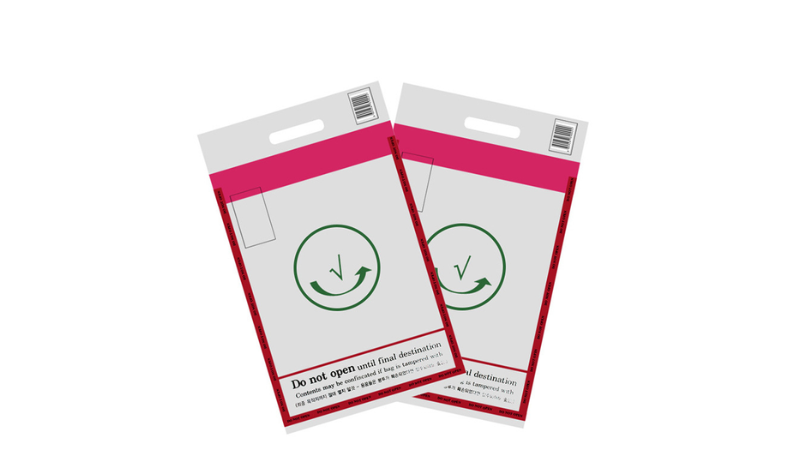
Additionally, choose a size and shape that fits your product well. An oversized or undersized bag may reduce protection and make tampering easier. The material should be durable enough to withstand handling and transport, while remaining lightweight and flexible to avoid unnecessary bulk.
User-Friendliness
While advanced features are important, the bag must also be easy to use. It should open and seal smoothly without requiring special tools or excessive force. A poor user experience can lead to handling errors, accidental damage, or even misuse.
For frequent-use environments, such as pharmacies, cash handling, or fulfillment centers. It looks for intuitive designs that minimize training time and reduce operational errors. Clear instructions printed on the bag or color-coded seals can also improve usability.
The ideal tamper-evident bag strikes a balance between robust security features and practical functionality, ensuring both product protection and efficient handling.
Best Practices for Tamper-Evident Bag Use
To maximize the security provided by tamper-evident bags, it is essential to use them correctly and consistently. Here are a few best practices:
- Follow Manufacturer’s Instructions: Always adhere to the manufacturer’s guidelines to ensure the tamper-evident features are properly utilized.
- Ensure Proper Sealing: Verify that the bag is securely sealed and that the tamper-evident mechanism, such as a breakaway seal or void closure tape, is intact.
- Inspect Regularly: Check the bags frequently for signs of tampering, damage, or irregularities, including cuts, tears, or broken seals.
- Train Staff: Educate employees handling tamper-evident bags on recognizing and responding to tampering, ensuring consistency and reliability across processes.
- Handle with Care: Avoid rough handling to maintain the integrity of the tamper-evident features and prevent accidental damage.
By following these practices, businesses can enhance product security and maintain consumer trust.
FAQs
Q1: Can tamper-evident bags be reused?
Most tamper-evident bags are single-use, as their security features, like seals or closures, are compromised once opened.
Q2: Are tamper-evident bags customizable?
Yes, many tamper-evident bags can be customized with features like logos, barcodes, or serial numbers to match specific branding and security needs.
Q3: What materials are used to make tamper-evident bags?
Tamper-evident bags are typically made from durable materials like polyethylene or polypropylene.
Conclusion
Tamper-evident bags provide a secure way to transport and store valuable items while ensuring integrity and trust. So, choose the right security bag by carefully considering material durability, tamper-evident features, and industry-standard compliance! Whether you require bags for secure cash transport, sensitive documents, or valuable goods, the right choice will ensure peace of mind and security.
Secure Your Valuables With Shoskt’s Tamper-Evident Bags Now!
Shosky Security offers premium tamper-evident solutions designed to meet your unique requirements. Explore our range of customizable tamper-evident bags today and ensure the safety of your valuable items. Contact us to find the perfect solution!
